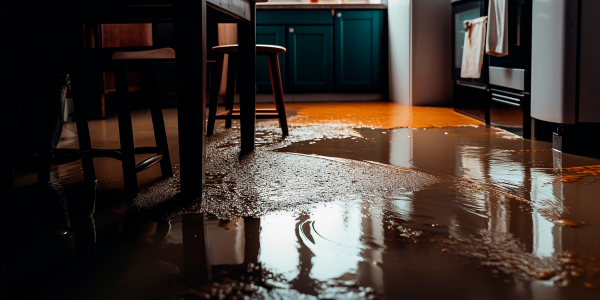Storms Henk, Isha and Jocelyn have already caused havoc across the UK in 2024 and the effects of climate change are at the forefront of people’s minds, now more than ever.
Other than disruption to public transport and the seemingly never ending rainfall being hot topics of conversation (pardon the pun), the effects of flooding, highwinds and rainfall are having huge impacts on homes and businesses.
Have you ever thought about the connection between climate change and your insurance? If not, we’re here to inform you on how the two link together.
Increasing risk flooding
Climate change is continually increasing the risk of flooding, which in turn, could impact your home insurance. The Environment Agency predicts that, by 2050, we could see 59% more winter rainfall and once-a-century sea level events could become annual by 2100.
The UK climate change flood map predicts that areas such as the south-east and north-west of England, and the south of Wales, will suffer from significantly more flooding than they have experienced in previous years, even if the government’s climate change pledges (keeping the global temperature increase to around 1.8 °C) are met.

Depending on your insurance policy, you may be covered against flooding. However, if you live in a high flood risk area, or a location that is likely to become a flood risk, you may find it more difficult to get cover.
It is also important to note that, if you live in one of these areas, you are more likely to have specific flood endorsements or increased excess’s and unfortunately your premium may be higher than comparable properties in low risk areas. Always make sure to read and check your documents.
The need for storm damage protection
Climate change isn’t just impacting the amount of rain we get. Other storm related damage, such as trees being blown into your property by 94 mph winds, is unfortunately becoming more common. According to the AA, around £1 billion worth of damage is caused by storms every year in the UK.
This increasing risk of damage is causing many building insurance providers to bump up the prices. In fact, the price of insuring residential buildings could double over the next 10 years!
Most home insurance policies will cover storm damage, such as falling trees and damaged roof tiles. However, your garden, fences and outside spaces are not always covered by your insurance.
Equally, it is important that you properly maintain your property. If your roof was found to be poorly maintained, or the tree that fell into your neighbours property was unsafe, you may still be liable and therefore your claim could be rejected or not paid in full.
How Nest GI can help
Unfortunately, there is a connection between climate change and insurance. As the disruption caused by climate change intensifies, the risks to your property will increase, and therefore your payments are also likely to go up.
Make sure you fully understand what is included in your insurance policy, and change if you need to.
At Nest GI, we specialise in non-standard insurance policies, which cover flood and subsidence risk areas, as well as other factors that may not be included in standard policies.
Contact us today to speak to one of our expert advisors and discover how we can help you to ensure that your property and belongings are insured, regardless of the state of the planet.








